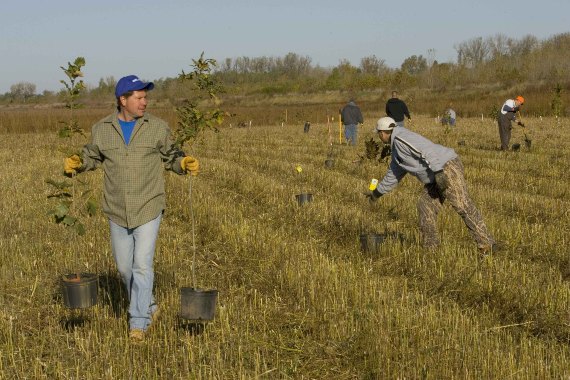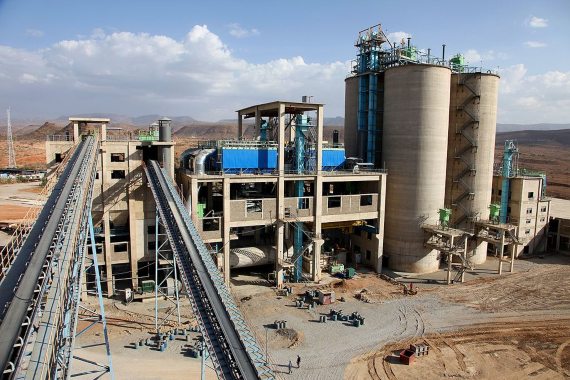To the extent that climate change has become one of the most intense fields of research in the 21st century, there is one mantra that experts keep repeating and which represents the consensus among scientists: to slow its progression, there is no alternative but to drastically cut CO2 and other greenhouse gas emissions. But in this arena, it’s the politicians not the scientists who are calling the shots. However, this doesn’t mean that science is weaponless when it comes to finding solutions that can take the fight to this global scourge. Here we review some of the proposals currently on the table, many of which are still being debated or are in the study or experimentation phases.
Reforestation
One of the most repeated slogans in recent years is the urgency of planting trees by the millions, since plant structures store large quantities of carbon; in fact, deforestation contributes greatly to the release of the CO2 responsible for climate change. But despite the proposals enthusiastically embraced by governments, corporations and international organisations, experts have warned that not all reforestation is advisable: native grassland ecosystems must be conserved, as must areas of permafrost —frozen subsoil— that act as carbon stores, coupled with the fact that tree canopies increase global warming by reducing albedo, the proportion of solar radiation that is reflected back into space.

Experts therefore urge caution, insisting on the need for more detailed research and the adoption of only those strategies that are sufficiently supported by scientific evidence. Some of the proposals that seem to be favoured by experts include allowing spontaneous natural reforestation of degraded areas and increasing the density of forest cover in previously existing forests
Green walls against desertification
Also related to reforestation, but with a broader approach, there are initiatives around the world to create long green walls that not only contribute to carbon sequestration, but also help to curb desertification and alleviate droughts. This in turn would lead to greater food security for local populations, which is seen as a way to mitigate famine, conflict and forced migration.
In 1978, China launched the Great Green Wall project, with the intention of slowing the advance of the Gobi desert and sandstorms by planting a 4,500-kilometre-long forested strip of land by the middle of this century. Drawing on China’s experience, in 2007 the African Union promoted the creation of a Great Green Wall in the Sahara and Sahel, an 8,000-kilometre barrier of trees that would run east-west across the continent, halting the advance of the desert, and would be the largest living structure on the planet.
The United Nations, the European Union and other institutions support the African project, which, however, like the Chinese project, has been roundly criticised for its lack of scientific underpinning and its impracticality; in 2016 it was said that more than 80% of the trees had died, planted in regions where no one could take care of them. Over the years, the original wall of trees idea has shifted to a more realistic approach based on protecting water and creating a diffuse mosaic of productive uses to reclaim degraded land. Although according to a 2020 report the project has still only covered 4% of its area planned to be completed by 2030, experts now welcome the effects of the progress made. A new project has recently emerged in India, which aims to create a 1,400-kilometre green wall between Gujarat and Delhi.
Capturing CO2 in the soil
Plant material and soils are the main natural resources available for carbon storage, but there are also ways to force the CO2 capture through different technologies. Indeed, experts warn that even if emissions are to be cut decisively in the coming decades, it will still be necessary to find a way to remove substantial amounts of CO2 from the atmosphere to achieve the goals of the 2015 Paris agreement to keep the global temperature increase below 1.5°C above pre-industrial levels.
Many carbon sequestration strategies have been proposed, but not all of them have the same chance of success, for one reason or another. In fact, this still nascent field is controversial among experts: some see great potential, while others are sceptical.
One way to capture carbon is to prevent it from being released into the atmosphere by injecting it underground (technically a way of reducing emissions, not removing CO2 already present). This can be done by creating underground pockets similar to those for oil, or by injecting the gas into porous rocks to dissolve it in the saline water that permeates them and create micro-bubbles. On the other hand, CO2 injection has been used for decades in enhanced oil recovery (EOR), a technique to increase crude oil extraction in order to achieve net gas storage. According to a recent scientific estimate, this procedure could be applied to more than 90% of the world’s oil reservoirs, which by 2050 could allow the storage of between 0.1 and 1.8 gigatonness of CO2 per year.
CO2 capture in products and materials
Another option available to capture CO2 is to incorporate that carbon into a wide variety of compounds. Through catalysts and chemical reactions, the CO2 —oxidised carbon— can be reduced —organic compounds consisting of carbon and hydrogen— to make alcohols, fertilisers such as urea or plastic polymers for various permanent uses, for example in building components or materials.

In the field of building materials, too, some experts have high hopes for the most widely used of them; in fact, it is the second most consumed material in the world after water, and three tonnes of it are used every year for every inhabitant of the planet: concrete, and specifically its main component, cement. The production of this binder is responsible for 7% of annual global CO2 emissions.
There are currently many proposals aimed at reducing these emissions. For example, part of the cement can be replaced by carbonated industrial by-products such as metal slag or coal fly ash, and the concrete itself can be recycled from demolitions. But going beyond these options, the aim is also to use cement as a net carbon sink by injecting it with CO2 for curing. This transforms the gas into solid calcium carbonate, which can even improve the properties of concrete.
Comments on this publication